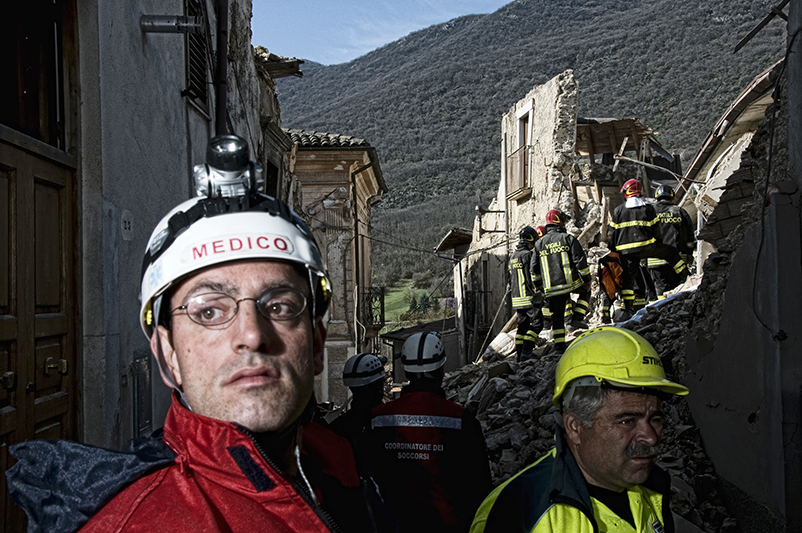The Abruzzo earthquake

At 3.32 a.m. on 6 April 2009, after a four-month-long earthquake sequence, a strong earthquake of magnitude 6.3 hit the territory of L'Aquila and Abruzzo. The earthquake caused 309 victims and more than 1500 injuries, in particular in L'Aquila and Onna. L'Aquila, located at the earthquake's epicenter, was seriously damaged in its residential, artistic, and cultural heritage. It was the first time, after the seismic event in Calabria and Messina in 1908, that a city was so severely hit by an earthquake.
The seismic sequence continued with many aftershocks, including two on April 7 and 9, again exceeding magnitude 5 and involving an area of more than 30 kilometers along the valley of the Aterno River. Within a month of the main shock, the national seismometric network, managed by the National Institute of Geophysics and Volcanology, recorded and localized about 5,000 shocks, 150 of which exceeded magnitude 3.
The extent of the damage was determined partially by the magnitude of the earthquake and, in some cases, by geological conditions that amplified ground motion. Most of the damage was due to the characteristics of the housing heritage, which consisted largely of vulnerable historic buildings.
After the earthquake of April 6, one of the objectives was to guarantee the affected population adequate and timely accommodation while waiting to restore or rebuild their homes. This objective provided different solutions for the inhabitants of the seismic "crater": the housing of the CASE Project, the MAP - Temporary Housing Modules, subsidized rents, accommodation in hotels and facilities provided by the State, and the possibility to access the CAS - Contribution for Self-Settlement.
Photo: Teams engaged in search and rescue activities in Villa Sant'Angelo (L'Aquila) following the earthquake of April 6, 2009 / Marcello Scopelliti